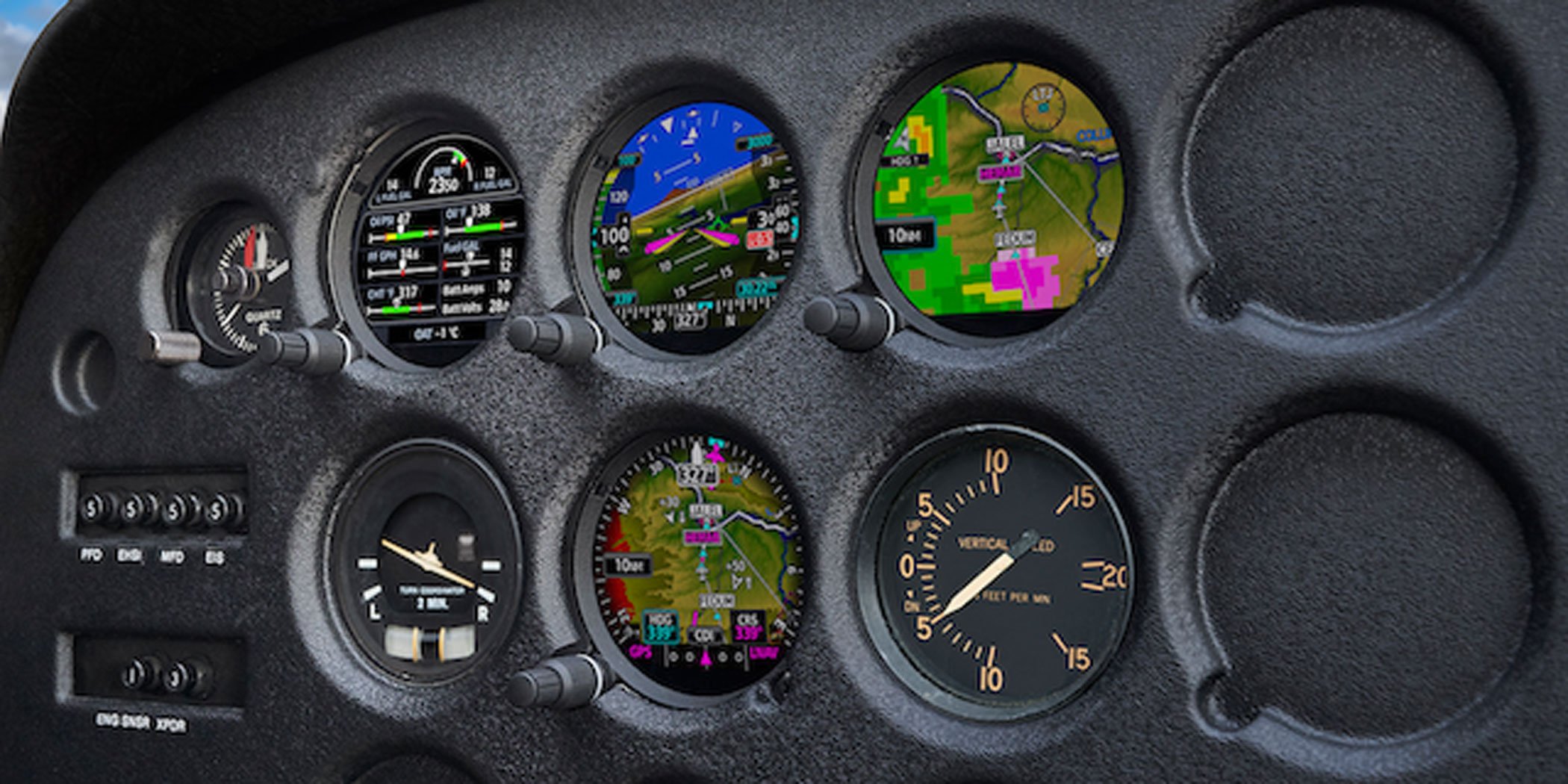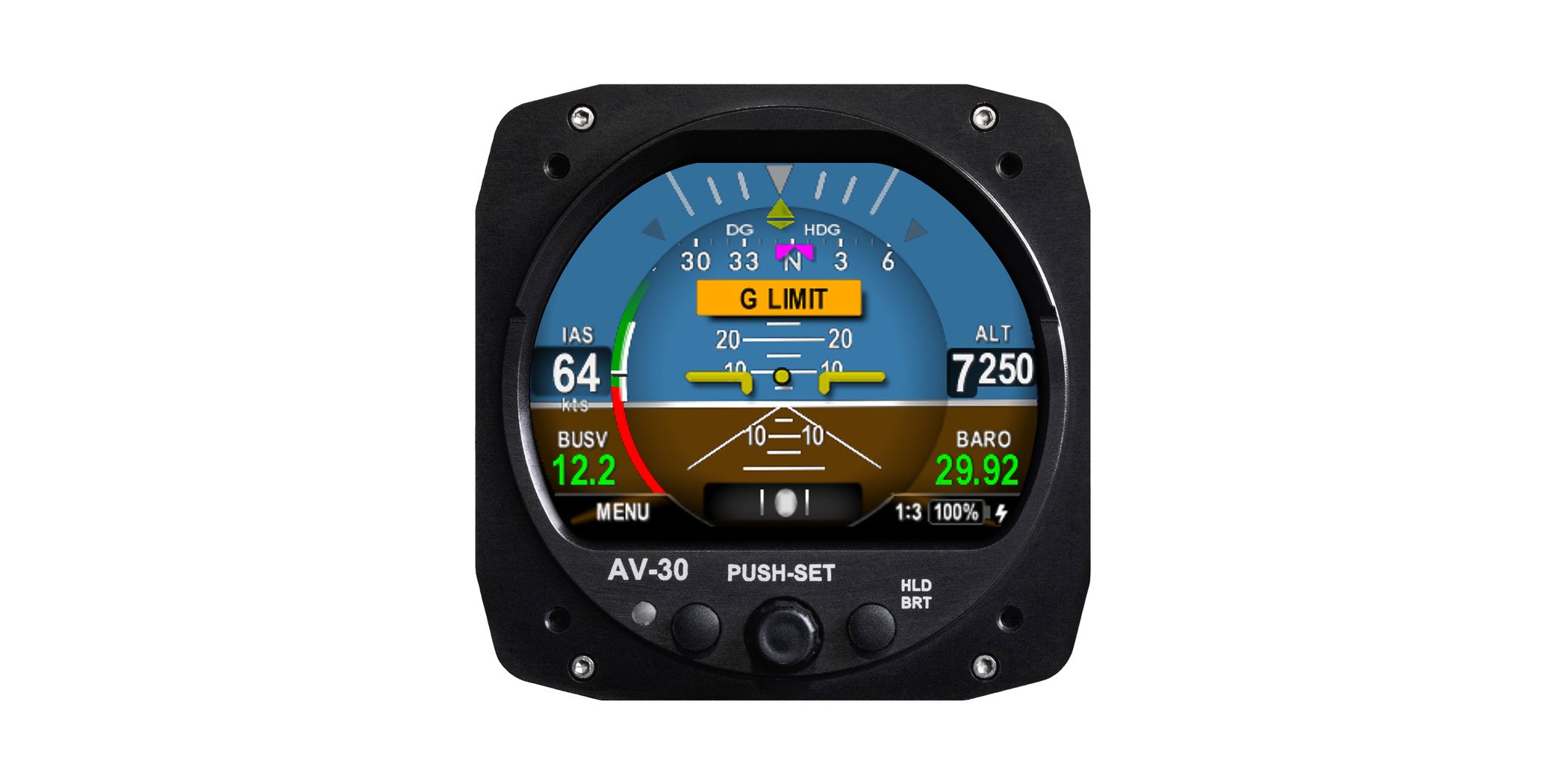Click Here to View This Page on Production Frontend
Click Here to Export Node Content
Click Here to View Printer-Friendly Version (Raw Backend)
Note: front-end display has links to styled print versions.
Content Node ID: 402991
Garmin GI 275 Displays
While the concept of glass displays replacing legacy electromechanical instruments isn’t new, Garmin has taken it a step further with the GI 275 series, basically creating nearly an integrated cockpit without having to redesign the panel for larger displays. The result is a product that can replace attitude indicators, attitude direction indicators, horizontal situation indicators (HSIs), and course deviation indicators (CDIs), and it can also replace engine instruments as a primary engine indication system (EIS) as well as connect with Garmin and third-party autopilots.
Information available on the GI 275 includes synthetic vision (optional), traffic, weather, terrain, SafeTaxi airport diagrams, and multifunction display-type maps. One GI 275 can also be a four-in-one instrument that can be installed as a standby display with a 60-minute backup battery. As a standby, the GI 275 includes a VFR GPS for backup navigation.

The GI 275 offers both touchscreen and dual-concentric knob interfaces, with the same operating philosophy of other Garmin products so pilots will quickly be able to learn how to use the new displays. FAA approval is already available for more than 1,000 single- and twin-engine aircraft, as well as some Class IV (commuter category; for example, Beech 1900) and Part 25 aircraft. Prices start at less than $4,000 and vary depending on the configuration and options.
The GI 275 can interface with third-party navigators, not just Garmin units, and without an adapter. As a CDI or HSI, the GI 275 can also serve as a multifunction (MFD) with features including moving-map, weather, traffic, and terrain. The GI 275 can also be installed as an MFD with those display features as well as interfacing with traffic advisory (TAS) and traffic alert and collision avoidance systems (TCAS). Other MFD features include Garmin’s SafeTaxi airport diagrams, terrain shading, and obstacles, including Garmin’s WireAware database.
uAvionix AV-C-30 Displays
Competition in the market for replacement 3.125-inch glass displays is heating up, and uAvionix has introduced the AV-30-C digital multi-mode instrument, which is FAA approved for installation in hundreds of certified aircraft. Mounting from behind the panel in a standard 3.125-in instrument hole; the AV-30-C can replace an airplane’s vacuum system when two of the multi-mode instruments are installed. The pilot interface is not touchscreen control; the AV-30-C uses two buttons and a rotary knob for various selections.
For added utility, the AV-30-C also integrates with uAvionix’s tailBeaconX ADS-B Out transponder, setting transponder codes and modes. Each AV-30-C contains its own inertial and pressure sensors so it can be field-configured as either an attitude indicator (AI) or heading indicator/directional gyro (DG) although not as a horizontal situation indicator.

In its basic mode, it displays as an AI with primary attitude and slip or as a DG with airplane direction always displayed. The pilot can add supplemental textual and graphical overlays on portions of the instrument that are not used for the primary functions.
These include functions such as indicated airspeed, altitude, V-speeds, derived angle of attack, vertical speed, set altitude, heading, bus voltage, g load, outside air temperature, true airspeed, density altitude, a variety of navigation information, and alerting for angle of attack, g limit, and excessive roll, among others. The built-in lithium-ion battery lasts for two hours and provides at least 30 minutes of operation in all temperature conditions, according to uAvionix. To try out the AV-30-C, prospective buyers can download a simulator from the company website and view all the available functions.
Gogo Business Aviation Lowers ATG Altitude
Gogo’s new lower service level dropped the altitude at which aircraft can start using the Gogo air-to-ground service to 3,000 feet from 10,000 feet. According to Gogo, this adds 15-20 minutes of extra connectivity availability for a typical flight, which makes its services more useful for both pilots and passengers.
Gogo’s air-to-ground network is available across the U.S. and in parts of Canada and Alaska and network speeds on the Avance L5 platform are similar to 4G speeds on the terrestrial internet, allowing video streaming and other network-intensive activities.

The new 3,000-foot capability is added via a software update, and no physical changes are needed to the airborne hardware. Customer aircraft must be equipped with Avance L3 or L5 systems. More than 1,300 business aircraft are already equipped with Avance hardware.
During flight testing of the new capability, 50 aircraft flew the new software over four months, and the service down to 3,000 feet agl was available “at most locations throughout the contiguous United States,” according to Gogo. However, the company added, “Testing shows service may not be available everywhere and system performance may vary from airport to airport; Gogo’s service guarantees apply once an aircraft reaches 10,000 feet [agl].”
“In our flight testing, we found that the Avance L5 consistently performed well at altitudes below 10,000 feet and provided a quality connectivity experience for our passengers,” said Tim Eames, chief pilot for Odin 123, which conducted several test flights. “The additional time to conduct business or make arrangements was valuable and appreciated by our passengers.”
Viasat Removes Speed Limits
Viasat has eliminated “internet speed limits” for business aviation customers of its Ka-band satcom network, and some customers have already reported seeing airborne connectivity speed tests of 30 to 40 Mbps.
“We removed a software limit, which takes place in a ‘traffic shaper’ in our satellite network,” explained James Person, director of business development and strategy for the satcom operator.
Viasat’s initial Ka-band satcom services peaked at 16 Mbps and this was available even for the smallest aircraft that could accommodate the Viasat airborne hardware, such as the super-midsize Gulfstream G280 or Embraer Praetor 500/600. Members of Viasat’s customer advisory board asked if more speed might be available, and it turned out that Viasat’s network had “massive amounts of capacity,” Person said. “Why not open that for our business jet customers?”

The traffic shaper limited the capability of the network for end-users, and once that was removed, the full capacity became available to business aviation operators. “Instead of artificially constraining the internet experience,” he said, “now it will go up to whatever capacity is available in our satellite beams and the hardware in the aircraft.”
Person explained that the move to open up the Viasat capacity “isn’t to wow people with high results of speed tests, but more in line with how people use the internet.” Customers now expect airborne internet access to match their experiences at well-connected homes and offices. Streaming content such as movies or large email attachments start buffering quicker on the aircraft and download much faster.
Viasat is unique among satcom network operators in that it also provides the airborne hardware. Its system comprises just three LRUs that can fit on midsize and larger business jets, thanks to the 12-inch antenna. The hardware fits outside the pressure vessel and doesn’t require space in the baggage compartment.
Aviation Groups Help Industry Meet ADS-B Deadline
When the FAA signed off on the final rule that established the deadline for installation of Automatic Dependent Surveillance-Broadcast (ADS-B) equipment in most aircraft flying in the U.S., there was a lot of grumbling about the mandate. Aircraft owners questioned the expense, avionics shops wondered if they would get the equipment from manufacturers in time and whether they would have enough capacity to install it in nearly 200,000 aircraft, and pilots wondered what the fuss was all about.
Now that the Jan. 1, 2020 deadline has passed, pilots have had plenty of time to fly with ADS-B Out. And the FAA smartly added an incentive to the mix: ADS-B In, which includes free traffic and weather information deliverable to avionics displays and portable devices. In fact, ADS-B In was switched on well before the 2020 mandate, giving pilots years to experience the benefits of nearly live weather while in flight and live traffic information. Spotting other traffic is so much easier now with ADS-B In that pilots realize how difficult it is to see traffic by eyesight alone, and they are not complaining now about the ADS-B mandate.
To help pilots, avionics shops, and anyone affected, aviation organizations stepped up their educational efforts. While magazine and online articles did their best to explain ADS-B, the aviation “alphabet” groups helped pilots understand not only what the equipage mandate meant but also the benefits of ADS-B Out and In. They also worked closely with the FAA to make sure the final rule made sense and that requirements around installation and operation made equipping easier and ultimately, for many aircraft owners, reasonably priced. This was especially true of the Aircraft Electronics Association, which represents avionics shops.
Although there are likely others, these organizations played a significant role in the long road to ADS-B equipage in the U.S.: AEA-Aircraft Electronics Association; AOPA-Aircraft Owners and Pilots Association; EAA-Experimental Aircraft Association; GAMA-General Aviation Manufacturers Association; NATA-National Air Transportation Association; and NBAA-National Business Aviation Association.